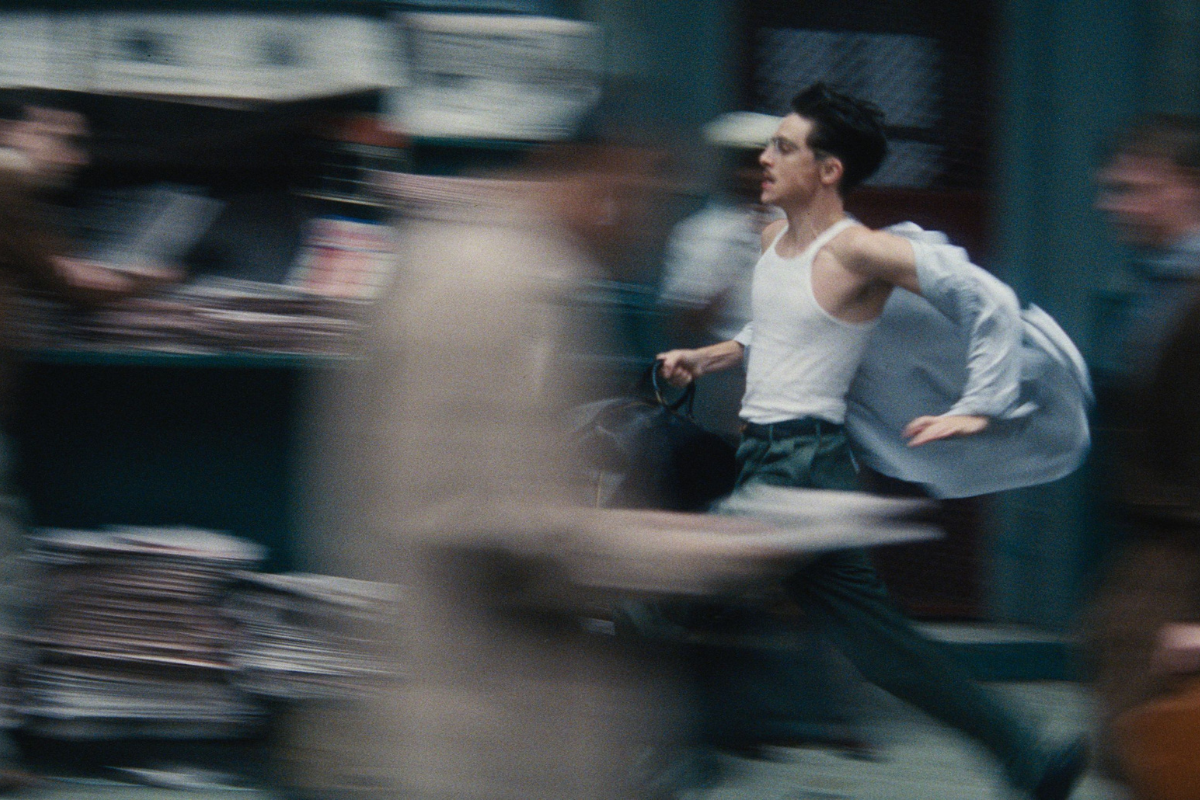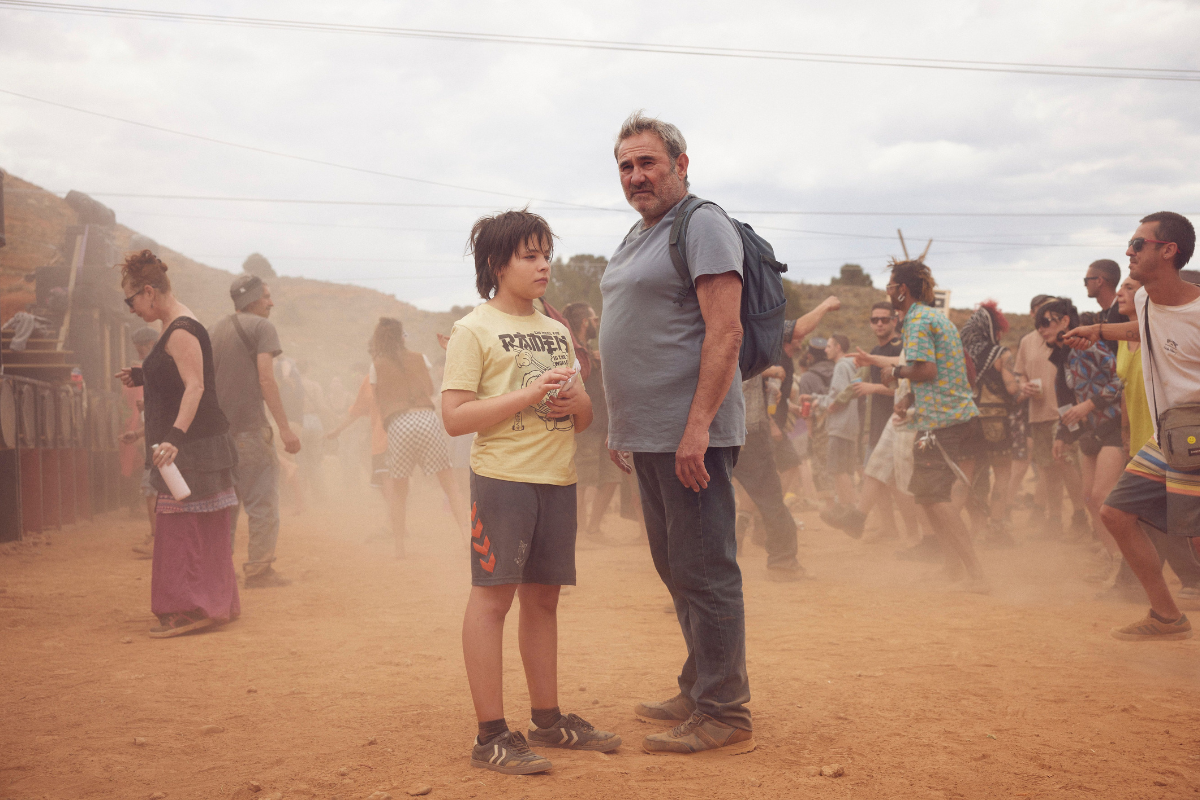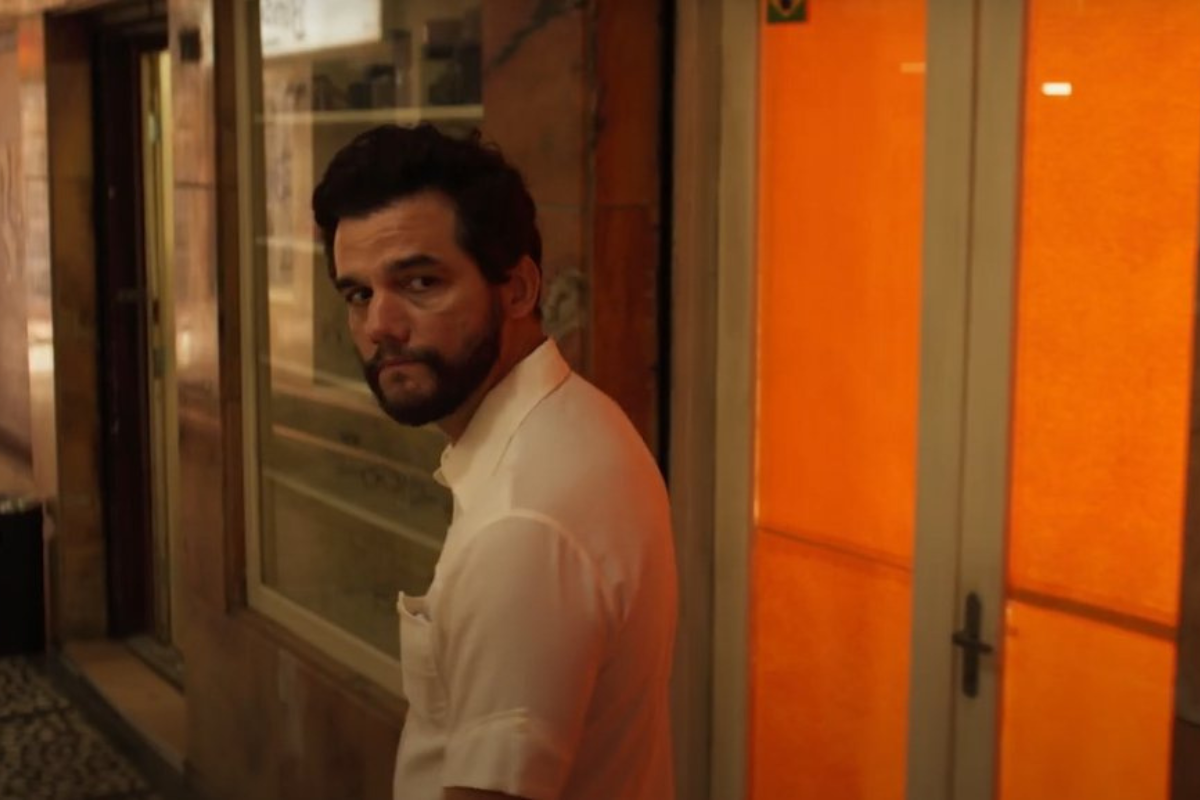UNDERSTANDING SCREENWRITING: Leotards and Jumpsuits
Tom Stempel reviews Captain Marvel, Shazam!, and Us. Explore the screenwriting hits, misses, and opportunities for storytelling and theme that got lost.
Tom Stempel reviews Captain Marvel, Shazam!, and Us. Explore the screenwriting hits, misses, and opportunities for storytelling and theme that got lost.
Brie Larson Gives Great Smirk.
Captain Marvel (2019. Screenplay by Anna Boden & Ryan Fleck & Geneva Robertson-Dworet, story by Nicole Perlman & Meg LeFauve and Anna Boden & Ryan Fleck & Geneva Robertson-Dworet. 123 minutes)
I don’t think I am exactly the demographic for this film. I was a kid in the forties and fifties. When I was reading comic books in those years, Captain Marvel was an obvious rip-off of D.C.’s Superman: a tall man with a lot of muscles, dressed in leotards, with a cape. So when you mention Captain Marvel to me, that is how I think of him, since I pretty much stopped reading comics when I got into my twenties (except for Mad Magazine; some things are sacred).
As you can imagine then, I was rather shocked when I heard that Brie Larson was going to play Captain Marvel in the new movie. What I had missed were all the changes in the character that had occurred in the last fifty years in the comics.
This does not mean, by the way, that I am one of those idiot misogynists who tried to destroy Captain Marvel through internet trolling before it opened. One of the best pieces of news, in time when there is not a lot of good news, is that the trolls failed miserably in their attempt to take down the movie. Can we hope that marks the beginning of the end of trolling?
So, anyway, I am not a misogynist, and I liked the idea of another female superhero, but as you may remember from my review of Wonder Woman (2017) that I had real reservations about that film. I am glad that Captain Marvel is so much better.
The opening, however, is rather confusing for someone not steeped in the revisionist world of Captain Marvel. The writers have multiple storylines and are hopping back and forth between them before we can get our bearings. That is not as sloppy as it may sound. You will recognize, I am sure, that the writers are copying Robert Bolt’s opening to Doctor Zhivago (1965). There, Yevgraf, an official in Communist Russia, is trying to locate the daughter of his half-brother. He is talking to a girl in her twenties, and he asks her about several names of people and places. She, and we, do not recognize any of them. But the scene familiarizes us those names so when they show up later, we have some awareness of them and we don’t have to learn them for the first time. The same thing happens here.
Eventually we settle down in the nineties and Carol Danvers meets a young Nick Fury, whom she knows (how?), but who has not started up the Avengers just yet. By this time we know that Carla is part of the Kree tribe, who are trying to keep the evil tribe called Skrull from invading Earth. Action scenes occur.
But then the writers shift gears. Carol meets up with Maria Rambeau, an old friend of hers from their days as Air Force pilots. The relationships of the rest of the characters have so far been fairly standard-issue for this kind of movie, but the friendship between Carol and Maria has a lot more substance to it. Normally, I would think this is a little late in the picture to bring in this kind of shift in tone, but it works here as both a counterpoint to the action scenes that come before it and as an addition to the picture instead of taking away from it.
Then, instead of returning to just action, we begin to get several interesting plot twists. I won’t divulge them here, but there are a couple of dandies. One of them carries through what has been an issue all along: who is Carol and how does she fit in the world. This is not exactly standard origin-story stuff, but more a progression of discoveries, very nicely laid out. What it leads to is Carol accepting who and what she is, particularly in once scene in relation to her mentor among the Krees. I was a little baffled with this ending, since it seemed to go against the rules of the world the movie seems to be part of, in that Carol, now in full Captain Marvel mode, now has more powers than she had when she was being given powers by her mentor. The way most people are interpreting this is that it is a feminist ending, and I can see why people like it that way.
Not, of course, the misogynist trolls. One of their complaints is that Carol does not smile enough (the subject of a nice joke early in the movie). But Carol is not a smiley-face sort of person. She is smart and tough and is more given to smirking at people who dislike her and underestimate her.
One of the big problems I had with Wonder Woman was that Gal Gadot was not as good in the acting scenes as she was in the action scenes. Brie Larson here is great in both, and she has an amazing range of smirks, suitable for all occasions.
Now, a theological question. Carol’s surname here is Danvers. So is Supergirl’s civilian name. But Captain Marvel is part of the Marvel Cinematic Universe and Supergirl is part of the DC galaxy. Is Marvel planning a takeover of DC? Or are the Skrulls going to take over it all?
One for my Demographic, But…
Shazam! (2019. Screenplay by Henry Gayden, story by Henry Gayden and Darren Lemke, Shazam created by Bill Parker and C.C. Beck. 132 minutes)
First of all, go back and read the first two paragraphs of the previous item.
So I should have been all set for Shazam!, since it appears to be based on the original Captain Marvel, the one I read about in the comics in the forties and fifties. (For a brief history of the changes in Captain Marvel, including who owns what, you can check out Brett Callwood’s article in the LA Weekly.) Well, I am not sure I was all set, but I was certainly curious.
The new version of Captain Marvel, now named Shazam, is part of the DC empire rather than the Marvel Cinematic Universe. DC has had a poor track record in their films in the last decades, while Marvel has had huge success (you can see why in my recent article “A Continuation of the History of Screenwriting in the American Film, Part III” here). A comparison of Shazaml! and Marvel’s Captain Marvel will show you how the two studios differ.
Shazam! starts out with a moderately rousing action scene: a father and two young sons are driving along a highway in the woods. The father is giving the youngest boy a hard time. When the car crashes, the dad still chews out the boy. We assume, via movie logic, that the young son is going to grow up to be Billy Batson, who will have the power to become Shazam, especially since we have seen him dream of being in a temple where he is being recruited by a wizard.
But we will learn later this kid is not Billy Batson. So we now get a lot of exposition setting up Billy as a kid who is a borderline juvenile delinquent who runs away from foster homes. He eventually lands in one with a whole passel of other kids, one of whom, Freddy, is a real wise-ass and a perfect friend for Billy. The rest of the family is very bland, both in the writing (they are not given a lot to do) and in the casting (which is terrible for the entire film; unlike Captain Marvel, nobody pops off the screen the way Brie Larson or Samuel L. Jackson do).
So we have Freddy and Billy and we start checking our watches for when Shazam will show up. It is half an hour into the picture before he does. He is played by Zachary Levi, who has been good in other things, but is allowed by the director David F. Sandberg to be all over the place in his performance.
One of the limitations of most of the DC films is a lack of a sense of humor (well, you let Zack Snyder make your films, you should know you are not going to get a barrel of laughs). Marvel realized early on, when director Jon Favreau let Robert Downey Jr. improvise in the first Iron Man film in 2008, that adding humor gives an extra color to their films. For Iron Man 3 (2013), Marvel brought in Shane Black to write the comedy in. In Iron Man 3 there is funny stuff about Tony Stark trying to adjust to moving in the suits. The equivalent in Shazam! is a sequence where Freddy is recording Shazam trying to figure out what his superpowers are. The comedy in that sequence, both verbal and especially physical, is flat. Levi does not have the either the verbal or physical comedy skills required. DC is obviously trying, years after Marvel discovered the secret, to add comedy. Their team on this film was not up to it.
Much has been written about this film costing “only” $80 million rather than the $152 million of Captain Marvel, but it shows in the casting, the production design, and the direction (Sandberg has not previously directed a film of this size). A general rule of thumb is that the lower the budget, the better your script has to be to hold the audience’s interest without the big-budget tricks.
Shazam! certainly held the audience’s interest on its opening weekend, although I have a sneaking suspicion the audience was made up primarily of all those trolls who tried, unsuccessfully, to kill off Captain Marvel before it opened. We should keep an eye on what kind of legs Shazam! turns out to have at the box office.
At Least Here There Are Jumpsuits and Not Leotards.
Us (2019. Written by Jordan Peele. 116 minutes)
Us opened just as I was getting ready to go on a road trip, so I only saw one review and did not have time to see the film before I left. I did not see it until two weeks later. Before I saw it, I came across an article in the Los Angeles Times that appeared after the film opened. I would give you a link to it, but as often happens with the Times, they have made it impossible to find online. It is titled “Going down the rabbit hole,” it is written by Jen Yamato, it appeared in print on March 27, 2019, and let me know if you can find it.
The article interviewed Jordan Peele and his stars, Lupita Nyong’o and Winston Duke. The article had them of them explaining the “spoilers” in the film. Not just some of the spoilers, but ALL of the spoilers. Needless to say, that piqued my interest, but I went to see the film before reading the article.
I was a big fan of Peele’s first film Get Out (2017), as you can tell from my review here. Us is not up to that standard. Get Out was a horror movie, but it was also funny and a social satire among other things. Us is mostly just a horror film, very well made, but without the richness of Get Out.
Peele starts with the young girl Adelaide several decades ago wandering away from her parents at an amusement park. She discovers something in a haunted house, but we do not see what it is. Years later Adelaide, now a mother of two, goes with her husband Gabe and their kids to a vacation near the park. After more exposition about the family than we need, they discover doppelgangers of themselves dressed in red jumpsuits standing in their driveway. Action and horror ensue.
At one point Adelaide asks Red, her twin, who they are. Red replies, “We are…Americans.” I thought this was going to lead to some of the kind of the social comment that Get Out had, but it does not. Peele, in the article, thinks it does. He says that some of the idea for his film came from the divisions in the country and the hatred of immigrants, but that is not explored or developed in the film. Peele and Nyong’o say in the article that the Teethered (the people in red) are the underclass who, as Nyong’o says, want “justice.” That is never brought up in the film.
Yamato says in the article that the interviews were done before the film opened, which suggests to me that Peele may well have been aware that audiences were not getting the nuances he thought he had written into the film. In Get Out, Peele had worked out the social comment in the story and characters, but here what we get are the mechanics of horror without the philosophical ideas Peele had hoped he written.
If you have to take up that much space explaining what you think your movie is about in an article in a newspaper, you have not made your points clear enough in cinematic terms. You need to use plotting, character, and dialogue to get across what you want the audiences to understand.
Us opened to a record-breaking $71 its first weekend. The second weekend gross had dropped 50%. That’s a lot, but not unusual for a horror movie. It does suggest, however, that I was not the only audience member baffled by the film.
Learn more about creating a great story with our self-paced, online course, Word Building: Crafting Screenplays Readers Can Step Into
START LEARNING NOW!
Tom Stempel is a Professor Emeritus at Los Angeles City College, where he taught film history and screenwriting from 1971 to 2011. He has written six books on film, five of them about screen and television writing. You can learn more about his books here. His 2008 book Understanding Screenwriting: Learning from Good, Not-Quite-So- Good, and Bad Screenplays evolved into this column. The column first appeared in 2008 at the blog The House Next Door, then at Slant, and then Creative Screenwriting before it found its forever home at Script.
In the column he reviews movies and television from the standpoint of screenwriting. He looks at new movies, old movies, and television movies and shows, as well as writing occasional other items, such as appreciations of screenwriters who have passed away, plays based on films, books on screenwriting and screenwriters, and other sundries.
In September 2023 Tom Stempel was awarded the inaugural Lifetime Achievement in the Service of Screenwriting Research by the international organization the Screenwriting Research Network.






